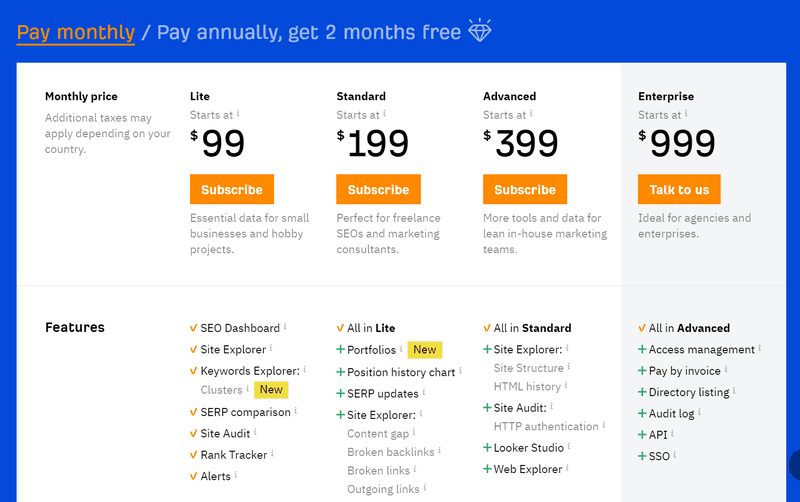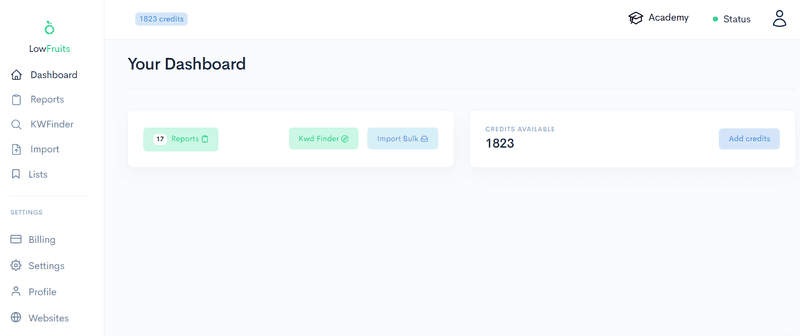Subscription Billing - Definition & How to Choose the Right Pricing Model
Oct 16, 2023
Subscription billing enables recurring payments and auto-renewals, which increases sales and improves revenue forecasting. Learn more about subscription billing.
The subscription business model, or subscription billing in short, is no longer the domain of SaaS companies. Companies in other industries are realising the profound benefits of automating billing and collecting recurring payments from customers.
Among the benefits of subscription billing that have attracted the attention of companies in such disparate industries as digital media, hospitality, cars, and personal fitness are predictable and increased revenue, automated billing, improved customer service, and better tracking and reporting capabilities.
That said, subscription billing is a complex concept, with many factors that you must consider for successful implementation. This article tackles the most critical of those, including the types of subscription pricing models and how to choose the right one for your business.
What is subscription billing?
Subscription billing is a method of charging customers for goods or services on a recurring basis or at intervals you have pre-specified. Also known as recurring billing and subscription payment processing, this type of billing has benefits for the business and its customers.
For customers, subscription billing offers the convenience of automatic payments for the products and services they love and use frequently. On the other hand, the billing model helps businesses generate recurring revenue, which is helpful for those trying to build a stable and predictable income stream.
The subscription billing model also helps businesses reduce churn and acquire new customers by offering a free trial or a discounted introductory price that can attract new customers who may not have otherwise tried your product or service.
The beauty of the subscription billing method is in its flexibility. It allows businesses to customise pricing plans to fit their offerings and audiences.
How subscription billing works

Subscription billing works in two ways. One is the manual way, where you send weekly, bi-weekly, or monthly invoices and ask customers to make payments manually.
This is the less preferred option, primarily because of all the work involved and the potential to lose customers, who are reminded to review their needs for your product or product and the value it offers.
The second way is auto-renewal subscriptions, where customers supply their payment information with authorisation to keep billing them until they cancel the subscription. This payment information is saved on file and is used to charge the customer at the start of every billing cycle.
The main benefit of this option is that it automates billing by pre-authorising subsequent charges, which means you will not need to ask for authorisation before charging and renewing the customer’s subscription. In other words, it enables auto-renewal, which makes it easier to predict sales revenue.
The most common usage cases for auto-renewal subscriptions are in SaaS, online membership clubs and forums, digital magazines and newspapers like The New York Times, The Wall Street Journal and Bloomberg, and video streaming services like Netflix, Hulu, and Amazon Prime Video. Another usage case that is growing in popularity is subscription boxes for physical products.
Types of subscription billing models.
Subscription billing is a fabulous way for businesses to generate recurring revenue and for customers to conveniently pay for the goods and services they love and use frequently. However, they are not a one-size-fits-all pricing solution.
To maximise revenue and fully meet your customers' needs, you must devise a subscription billing system that fits your product and market. Four types of subscription billing models have emerged and are commonly used:
1. Flat-rate pricing.
A flat-rate or fixed pricing model is where you charge one price for a product and all its features. This pricing model fits products with limited features that meet a common problem. Since the product is simple and has an easily identifiable market, it is easier to sell. You have one buyer persona to market to.
That said, a fixed-rate pricing model has its drawbacks. For one, it is an inefficient way to sell a SaaS product with many features. Large organisations may also find the pricing model’s capabilities too limited for their needs.
2. Per-user pricing.
Per-user pricing is based on the number of users that can have access. Also known as seat-based, this subscription pricing model is desired for its simplicity. Easier to scale, the pricing model charges per additional user. The model fits SaaS products well.
Put simply, the more employees a company hires, the bigger their needs grow. To add more users to the software, they must upgrade to a higher plan, which will naturally have a higher user count limit.
The biggest drawback of this subscription pricing model is password sharing by users. Employees can share the login details to access the same subscription, which robs your business of revenue.
3. Tiered pricing.

Tiered pricing gives customers a choice between ‘tiers’ of the same product, with each higher tier offering more features than those below, which allows you to segment your customers based on the features they like and need.
The pricing model fits businesses whose customers have varying needs and usage characteristics. Commonly used by SaaS companies, the tiered pricing model is highly desired for the up-selling opportunities it offers.
Besides the scalability the tiered pricing model offers businesses, it allows customers to choose a plan that meets their unique needs if that’s what they prefer. They don’t have to pay for features and services they don’t need.
You should, however, not choose and implement a tiered pricing plan for its benefits only. It must fit the product, meaning there should be clear distinctions between the tiers. Customers must be able to tell the value between the tiers you offer.
4. Per-added module pricing.
This pricing model has a base product, like the one you would use the flat-rate model to price. On top of that, it then adds modules or features that unlock more functionality. Plan prices, therefore, increase with every set of premium or more advanced features.
This pricing model has benefits for both the business and the customer. It opens the scope to unlock more value from the same product and customer, with every higher tier offering an upgrade opportunity.
For the customer, the product scales with their needs. They only pay for the features and functionality they need, meaning they can continue using the lower-priced plan until they are familiar enough with the software to get the most out of it or when their needs have grown.
5. Usage-based pricing.

Also known as the consumption or pay-as-you-go pricing model, with a usage-based subscription pricing model, customers pay a certain amount for a specific number of usage credits. These credits are deducted every time you use the software or its premium features, for example, when you export a report or analyse a dataset.
The usage-based subscription pricing model relates the cost of the subscription to the amount of time and specific features a customer uses. The pricing model is less popular with SaaS companies because it places a tight ceiling on revenue.
Unless a customer exhausts their credits, they will not buy again. This differs from the other pricing models, where subscriptions expire after a specific period, like a week, month, or year. The consumption pricing model also requires more resources and tools to monitor customer usage of the product.
Consumers, on the other hand, find pay-as-you-go pricing to be the fairest. They only pay for actual usage, which allows them to save their credits for when they truly need to use the software.
With other subscription pricing models, your subscription is only valid for a specific time, whether or not you use it. The fact you haven’t watched anything on Netflix for months does not stop the company from charging your card. They will only stop when you cancel the subscription.
How to choose a subscription billing model for your business.
After deciding to follow a subscription business model, another decision that is just as crucial is deciding what subscription pricing model to adopt. There are several factors you must consider to make the right choice. Here are the most important:
1. Your product or service.
The type of product you are selling is your first consideration when selecting a pricing model. You must choose one that fits your product and enables you to maximise revenue.
When choosing a pricing model, consider your product’s features and benefits, add-ons, and upgrade scope. For example, a flat-rate pricing model will limit your revenue potential if the product offers cross or up-selling opportunities.
2. Your current customers.
Do you have usage data for your current customers? That data can help you understand how your customers prefer to be billed. First, you must identify if most of your customers are businesses or consumers using it for personal tasks.
If your customers are mostly businesses, you must establish if they are small or large businesses or if you can categorise them along distinct usage patterns and needs.
To choose the right pricing model, it helps to know what customers value in the product and how much they are able and willing to pay. Study your target or current customers to learn what they value between value (more features) and simplicity.
3. Your competitors.
If you are not the first to market with your product, the more successful players in your niche may have already done some of your homework for you. Look at their pricing pages for pointers on the customer segments they are targeting and with what pricing models.
There could be segments of the market they have neglected, which represent gaps where they are leaving money on the table, and you could fill, for example, by offering a lower-priced tier with fewer or more basic features.
4. Your bottom line.
A subscription pricing model is not good for your product if its revenue does not cover your costs. So, pay attention to your operating, fixed, and variable costs to ensure they don’t exceed revenue.
If a fixed-rate pricing model does not generate a healthy profit for the business, you may need to invest time and developer resources on new premium features you can up-sell users on.
As a solution to the profitability question, some SaaS companies have developed hybrid pricing systems that combine two or more different pricing models.
For example, you could offer a basic plan under the flat-rate pricing model and then higher tiers with the addition of more users or premium features unlocked.
5. Value offered.
More a guide on how much to choose than what pricing model to follow, drawing up a set of value metrics that show exactly what you are basing your pricing decisions on is crucial. Here are a few standard value metrics to remember:
Subscription length,
Number of documents or reports created,
Data capacity needed or computing power required,
Percentage of revenue generated by your product,
Amount of storage used.
For example, if your product is a key revenue driver for your customers, you can be more aggressive with your price and experiment with more ambitious up-selling offers.
It helps if the value metrics you base your pricing model decisions on are predictable for you and your customers. If the customer cannot predict and justify how much they will pay for the value you are claiming, they may not accept your pricing.
Customers will not pay unless they understand how and for what they are being charged. So, you should be able to explain what value your product offers and ensure it aligns with the price you are charging and the subscription pricing model you have chosen.
Above all, a subscription pricing model needs to be scalable. Whether your customer is big or small, the pricing model must be such that the customer’s needs grow with it.
In other words, the pricing model must anticipate the customer’s next growth phase and the features they will need. This way, there will be a pricing plan for every customer's size and need.
Of course, you can only have so many plans, which is why most SaaS companies offer enterprise plans whose plans are negotiated based on a customer’s unique needs. While you want to optimise revenue with your pricing model, it’s just as crucial to ensure the model works for your customers.
Optimise subscription revenue with the right subscription management software.
Your pricing model choice and the different pricing strategies help ensure you get the most out of your product, but on their own, they are just pieces of a machine. It is the subscription management software you choose that optimises your pricing model and helps you maximise your revenue.
The right subscription management software automates the renewal process, helps you create pricing plans that fit your business and customers’ needs, and identifies up-sell opportunities.
The Intasend subscription management software automates the manual and laborious tasks of creating pricing plans and renewing subscriptions. Created with the needs of all companies following the subscription business model, the software integrates seamlessly with the tried and tested Intasend payment gateway.
Sign up for an Intasend business account to access our suite of tools that include the payment gateway, subscription software, scheduled and bulk business payments, and easily collect recurring customer payments online.

